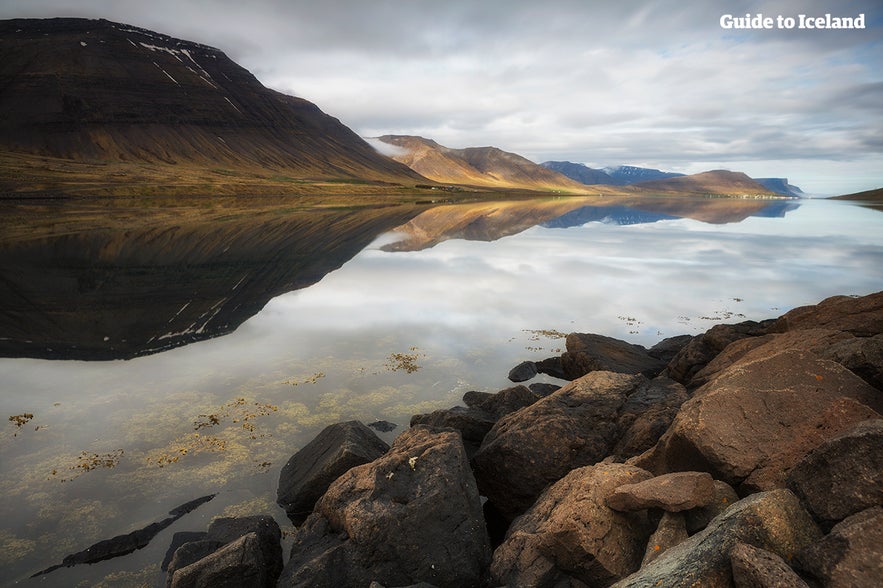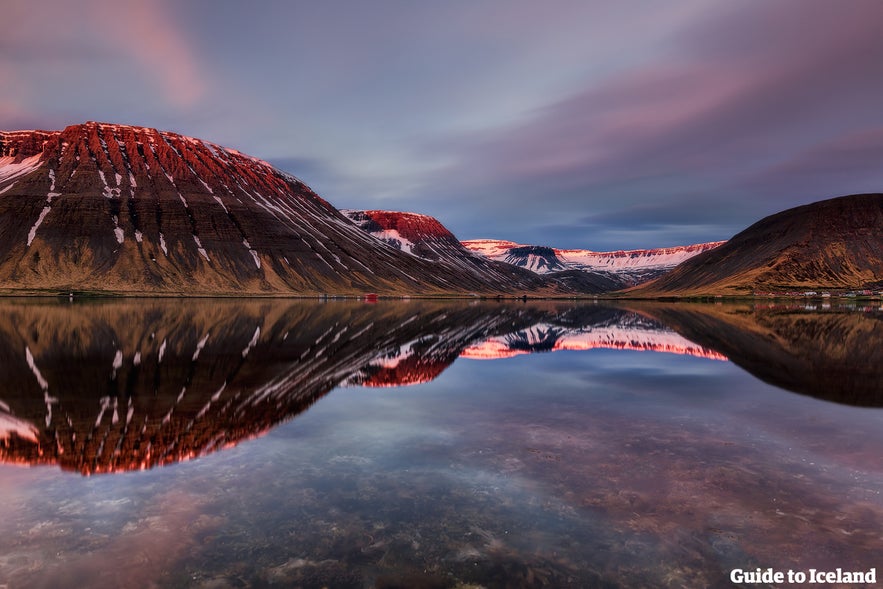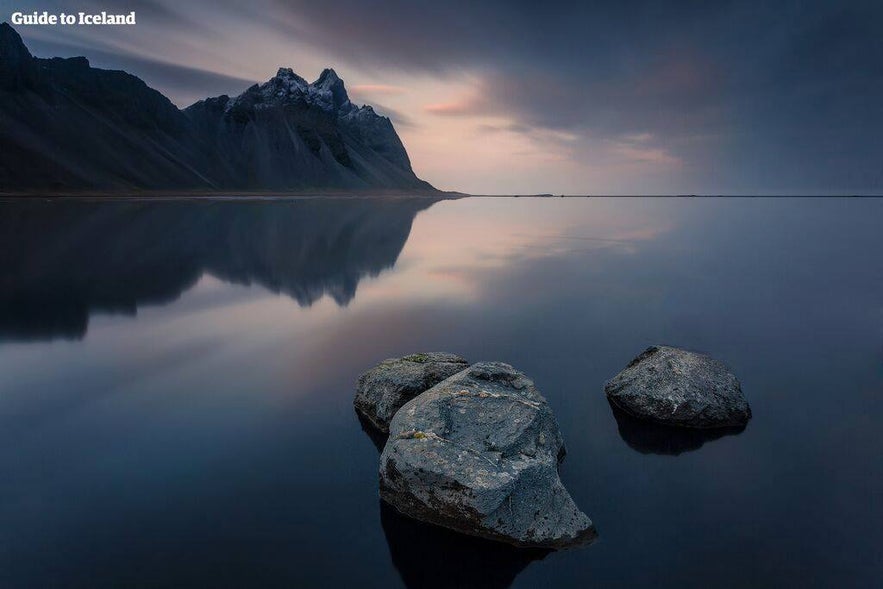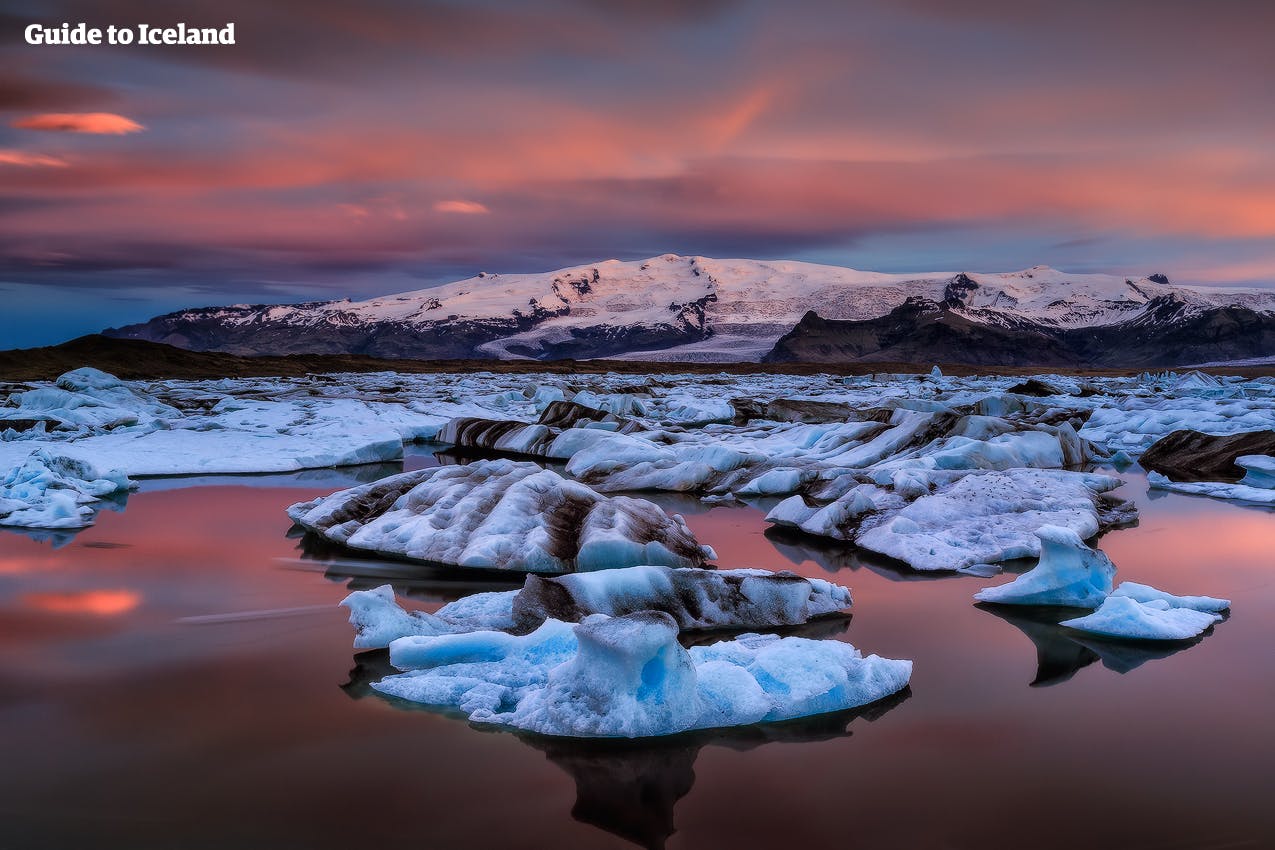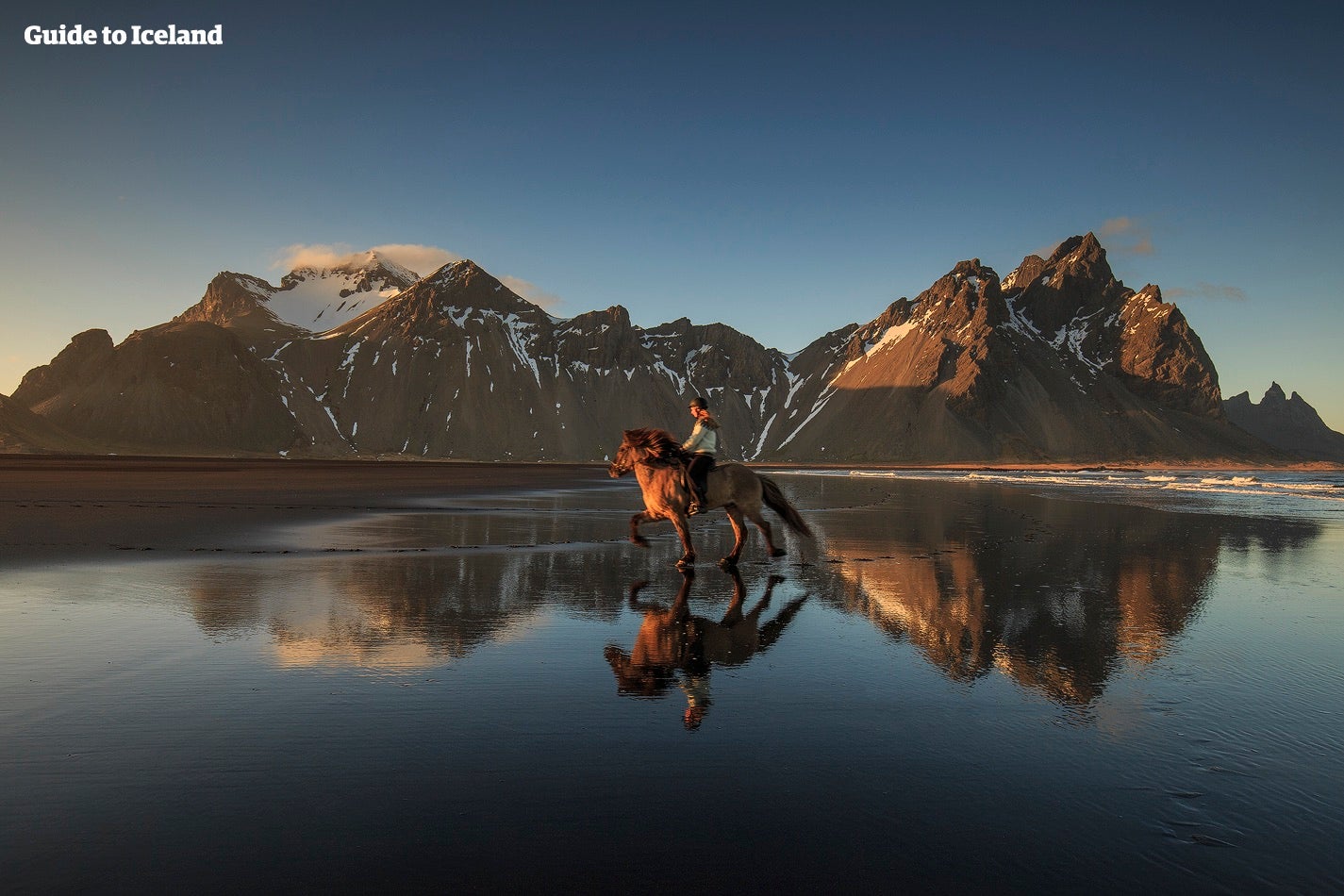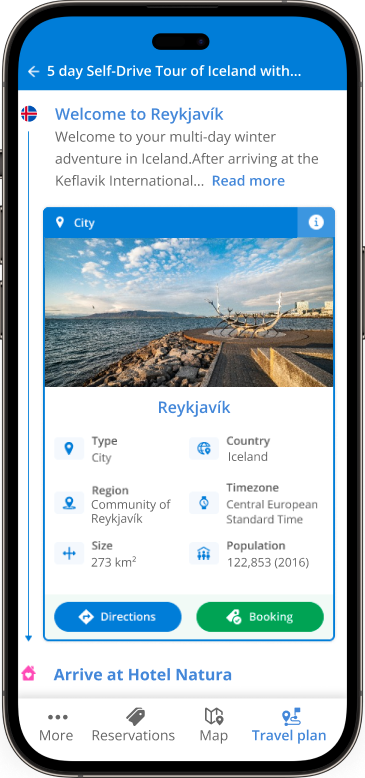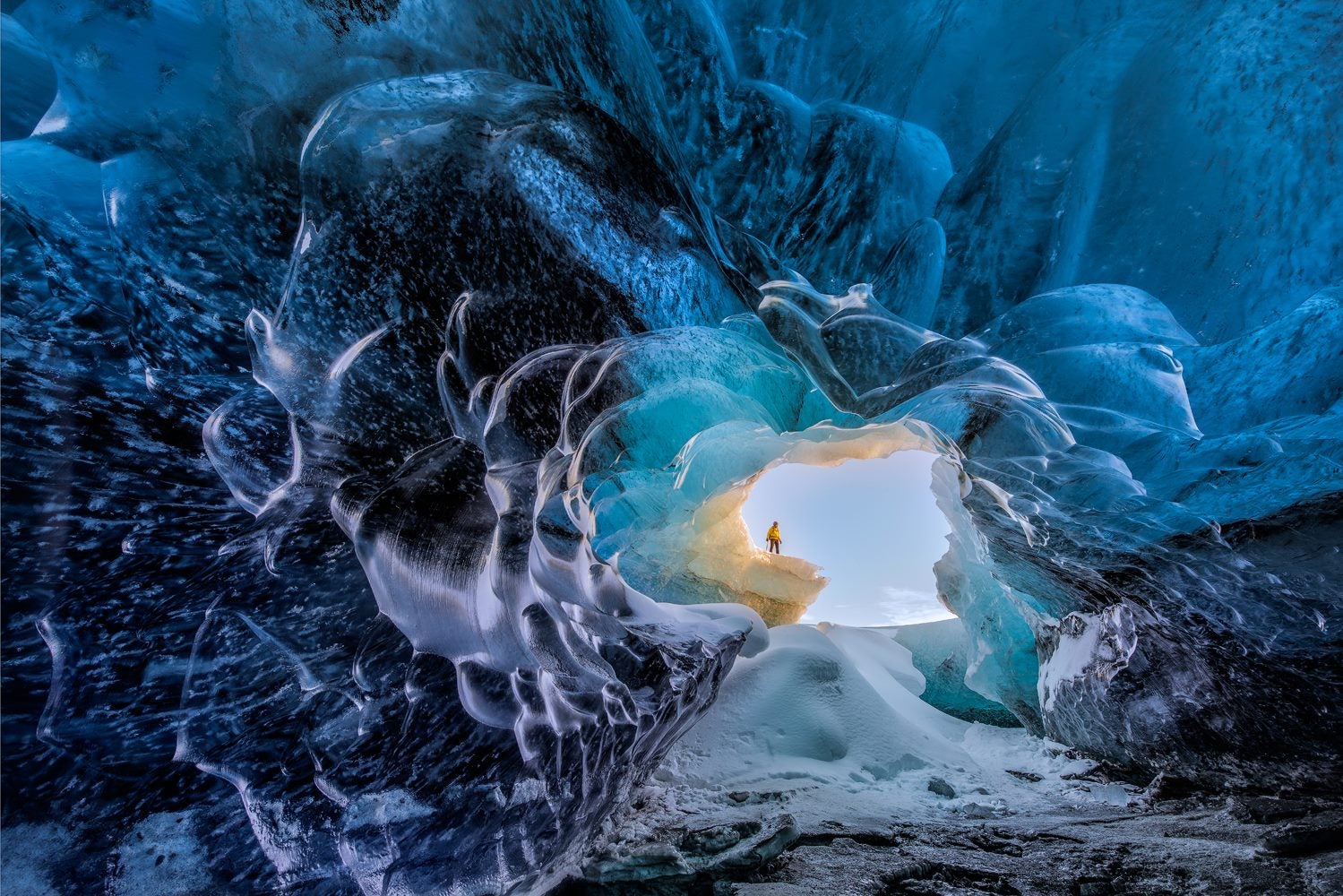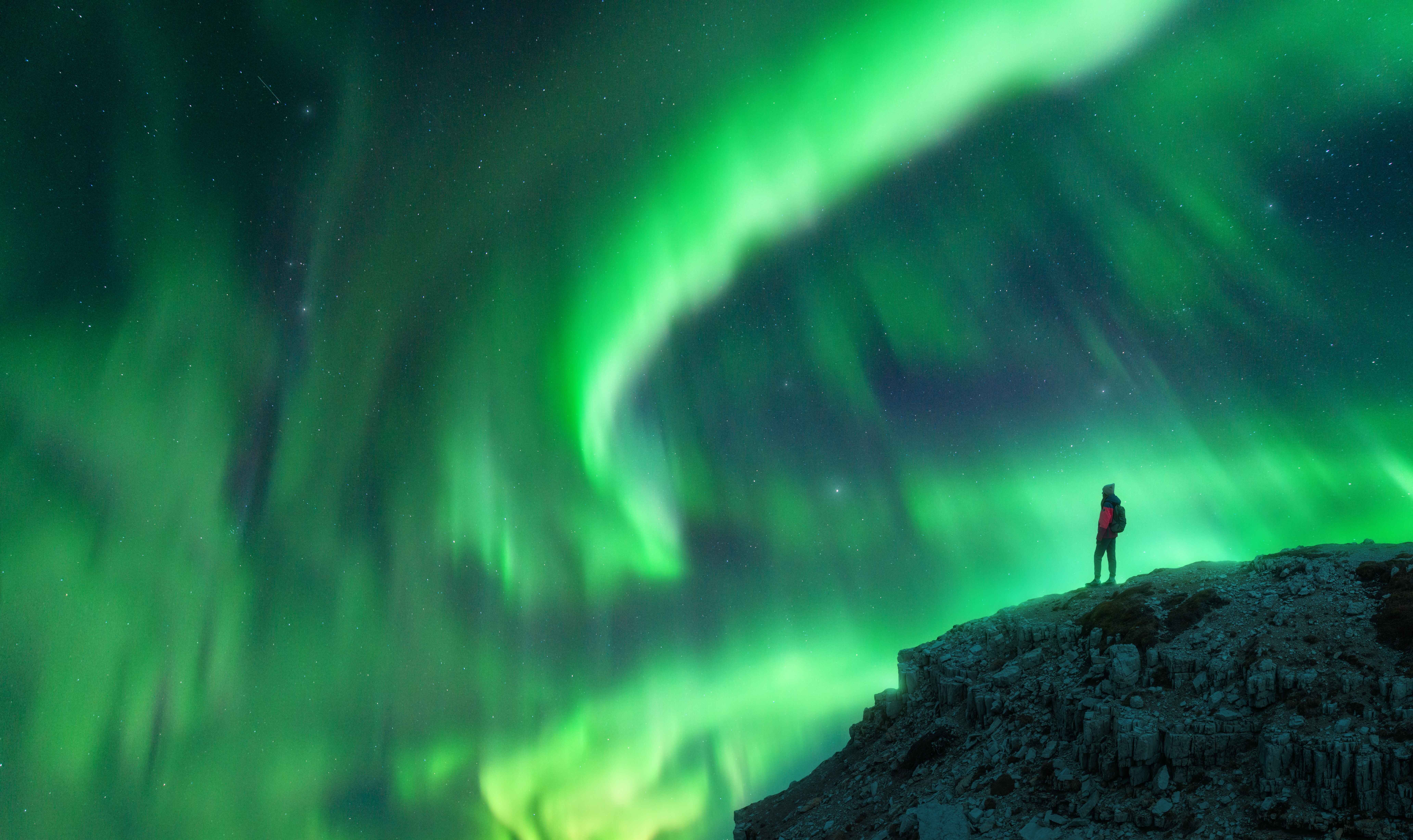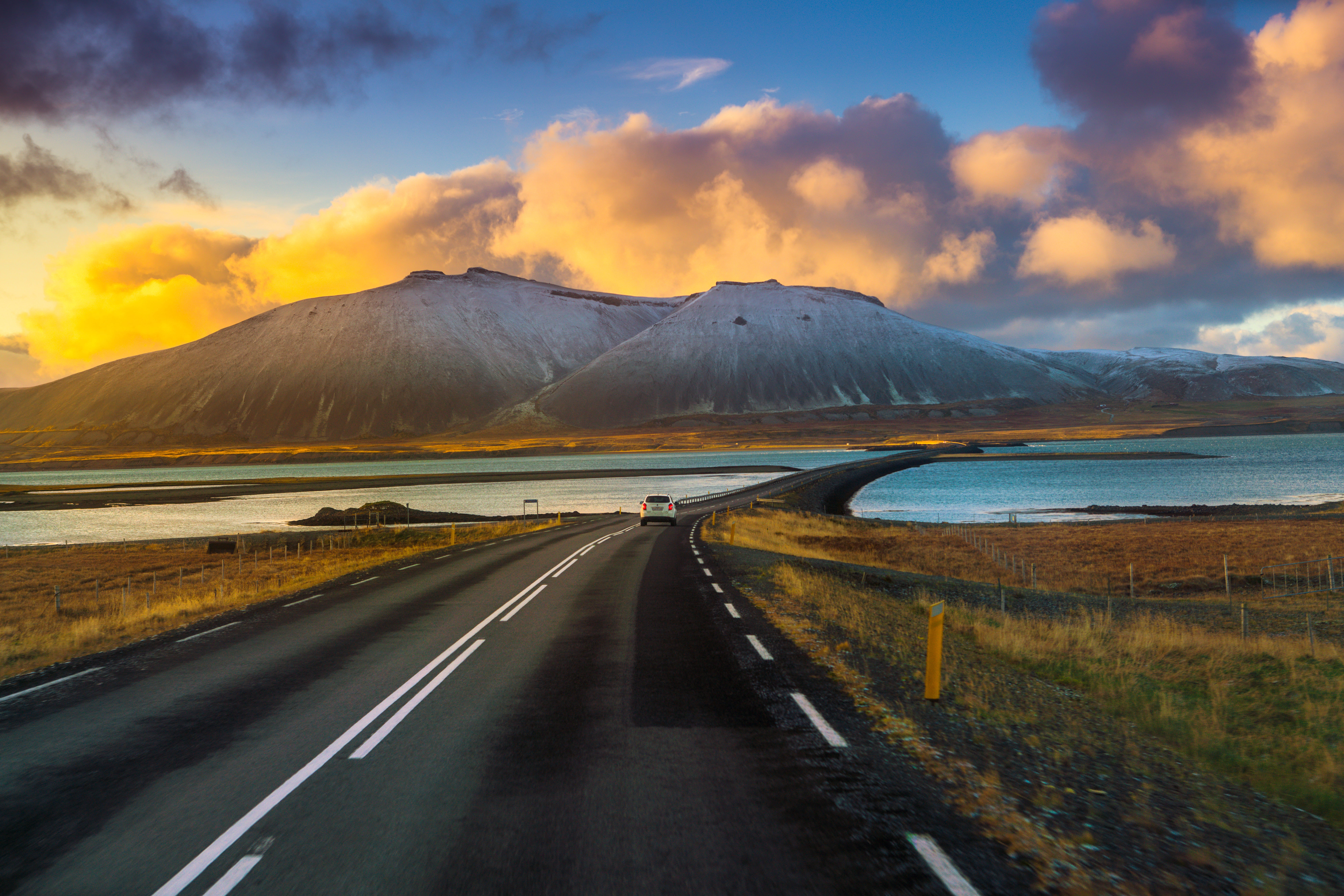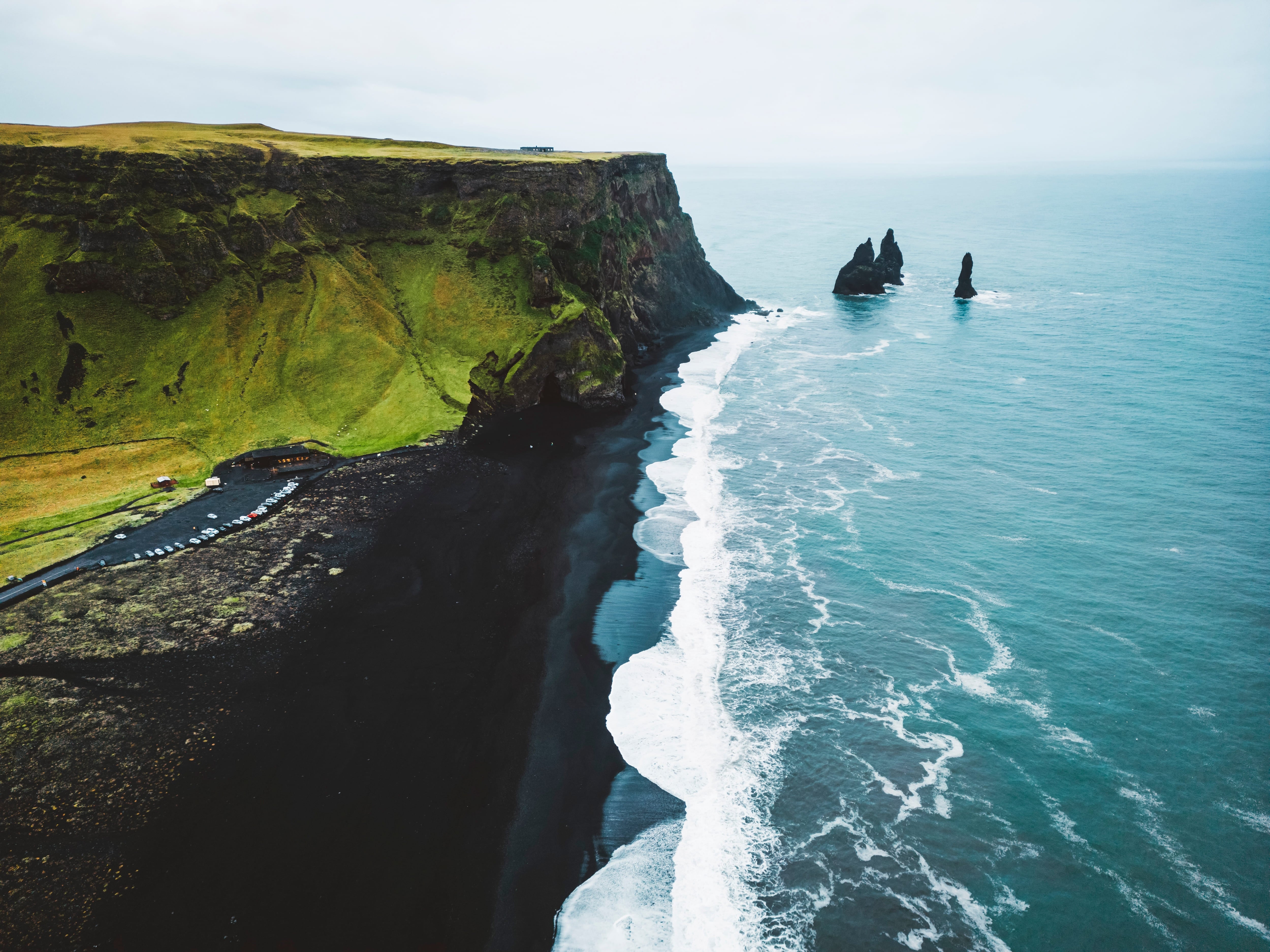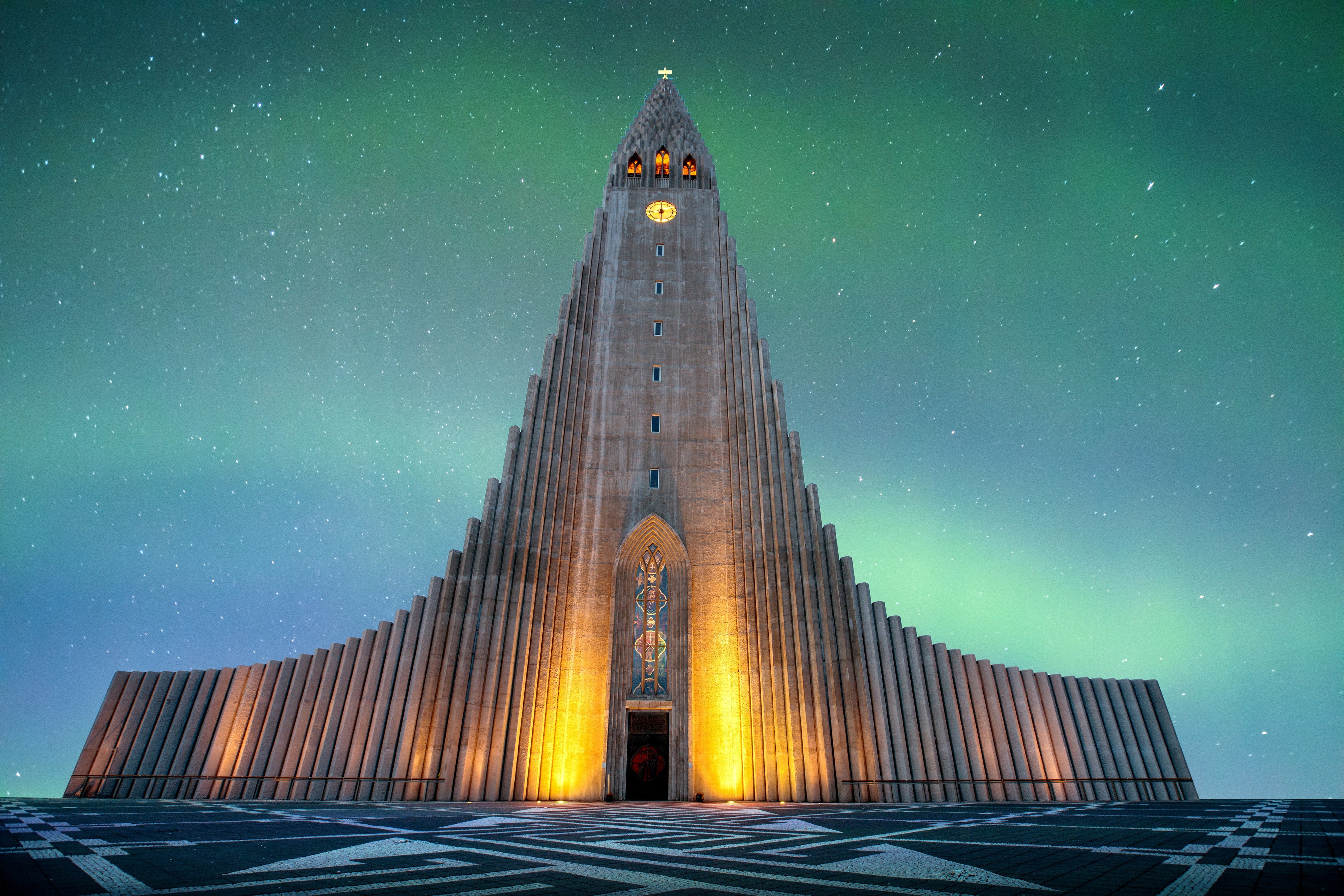Iceland's fjords are located in several remote regions, offering tourists a breathtaking look at the raw power and beauty of the country’s landscape. Continue reading to learn more.
There are over 100 fjords in Iceland, shaped by glaciers carving through the land over thousands of years. Most are in the Eastfjords and Westfjords, with a few scattered in North Iceland and around Reykjavik in the West. Many travelers explore these areas on fjord tours or self-drive tours.
Why You Can Trust Our Content
Guide to Iceland is the most trusted travel platform in Iceland, helping millions of visitors each year. All our content is written and reviewed by local experts who are deeply familiar with Iceland. You can count on us for accurate, up-to-date, and trustworthy travel advice.
They reveal some of the country’s most breathtaking scenery, but they’re also rich ecosystems where whales, seals, and seabirds thrive. Exploring them offers visitors a rare glimpse into Iceland’s untamed wilderness. Read on to learn more about the dramatic fjords in Iceland and how to visit.
Reasons To Visit the Icelandic Fjords
-
Unique Geography: Icelandic fjords are a familiar part of the country’s landscape, having formed during the last ice age.
-
Proximity to Reykjavik: Visitors to Reykjavik can easily travel to two of Iceland’s major fjords — Hvalfjordur Fjord and Borgarfjordur Fjord.
-
The Westfjords: This region is home to many fjords, waterfalls, and small towns that give visitors a look at the country’s remote landscapes.
-
The Eastfords: Hikers can experience unbelievable fjords and scenic landscapes in this vibrant region.
-
Fjords in North Iceland: Fjords in this region are dotted with islands and plenty of wildlife in and out of the water.
The Geography of Icelandic Fjords
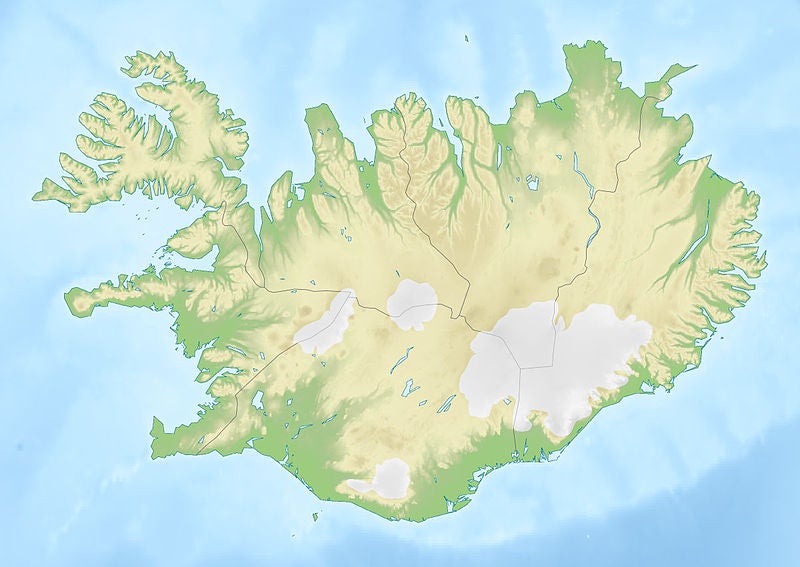
Erosion and shifting tectonic plates continued to shape the fjords, which are framed by dramatic mountains. In the inner, shallower sections of the fjords, also known as the “sea bottom,” these Icelandic mountains are draped with small streams and countless waterfalls.
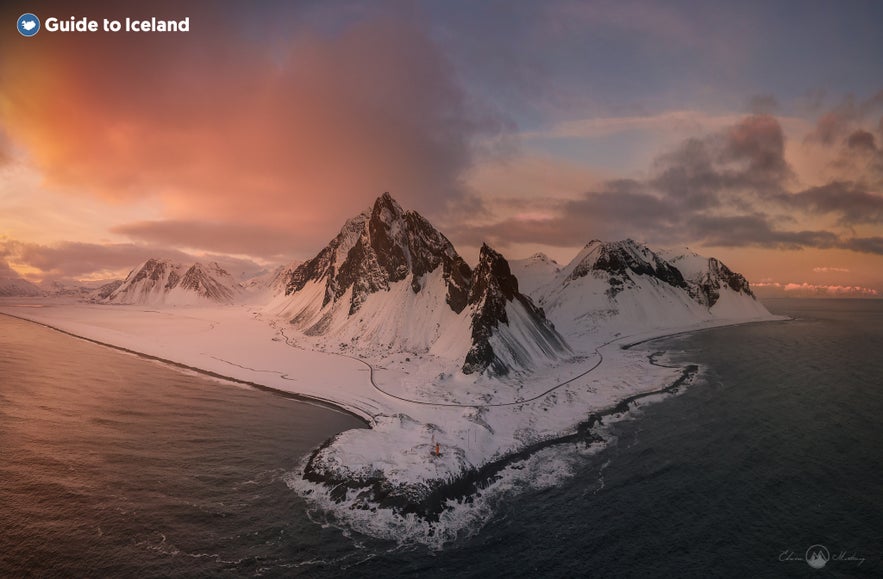 The “mouth” of a fjord is the wider section that connects to the sea. These areas offer breathtaking views and are also home to some of Iceland’s unique wildlife, such as whales, seals, puffins, Arctic foxes, and reindeer.
The “mouth” of a fjord is the wider section that connects to the sea. These areas offer breathtaking views and are also home to some of Iceland’s unique wildlife, such as whales, seals, puffins, Arctic foxes, and reindeer.
Fjords Near Reykjavik
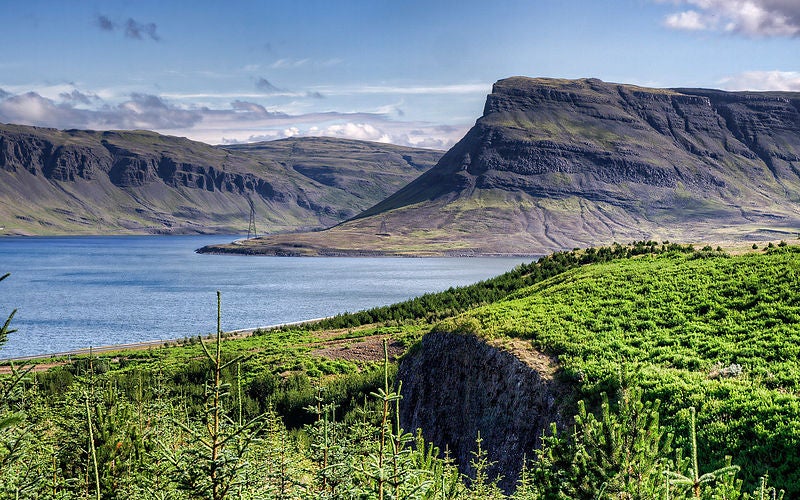
Two of Iceland’s large fjords are located just north of Reykjavik.
Hvalfjordur Fjord
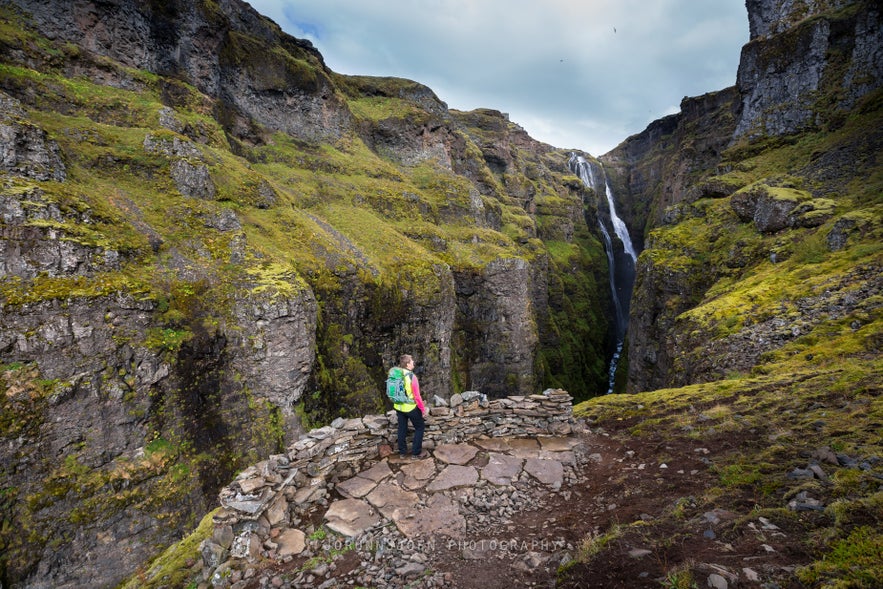
A tunnel under Hvalfjordur Fjord was constructed in 1998 to shorten the distance between Reykjavik and Akureyri. Getting to Hvalfjordur Fjord requires a detour off the Ring Road, but it’s well worth it.
A trip to the bottom of Hvalfjordur Fjord allows you to see Glymur, Iceland’s second largest waterfall. This is also a perfect spot for a rejuvenating dip in the Hvammsvik Hot Springs.
Borgarfjordur Fjord
 Meaning ”fortress fjord” in Icelandic, Borgarfjordur Fjord covers the entire coastline between Reykjavik and the Snaefellsnes Peninsula. It’s home to Borgarnes, a quaint town that’s a popular stop between Reykjavik and Akureyri.
Meaning ”fortress fjord” in Icelandic, Borgarfjordur Fjord covers the entire coastline between Reykjavik and the Snaefellsnes Peninsula. It’s home to Borgarnes, a quaint town that’s a popular stop between Reykjavik and Akureyri.
Borgarfjordur Fjord features geothermal waters and a combination of mountains and valleys. You can also find the Hraunfossar Waterfalls and other natural attractions like the Deildartunguhver Hot Springs, which heat up the luxurious Krauma Spa.
The Westfjords of Iceland
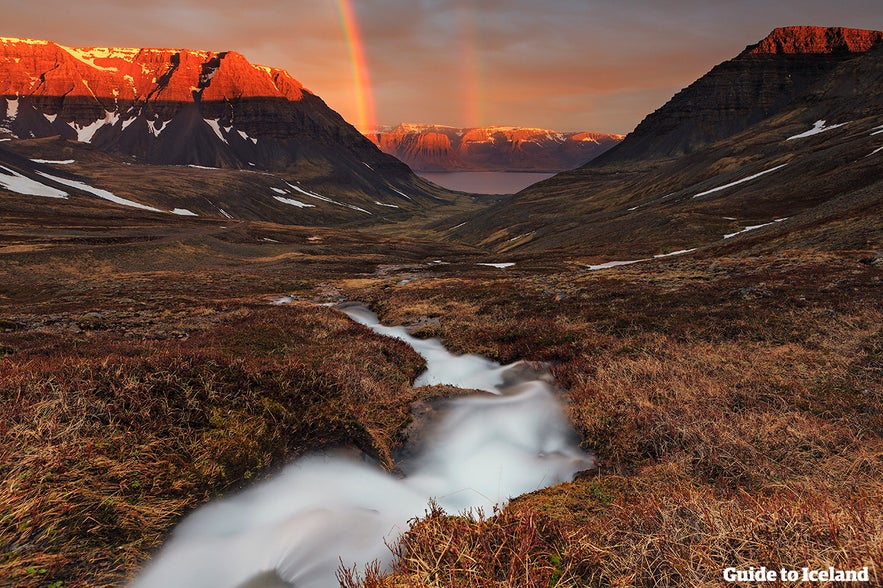
Breidafjordur Fjord, which means “wide fjord” in Icelandic, is a must-see when visiting the Westfjords. It’s famous for its many islands, rich birdlife, and marine ecosystem.
The fjord connects the Snaefellsnes Peninsula to the Westfjords. You can take the Baldur Ferry to explore Breidafjordur Fjord while on self-drive tours, with a stop in Flatey Island.
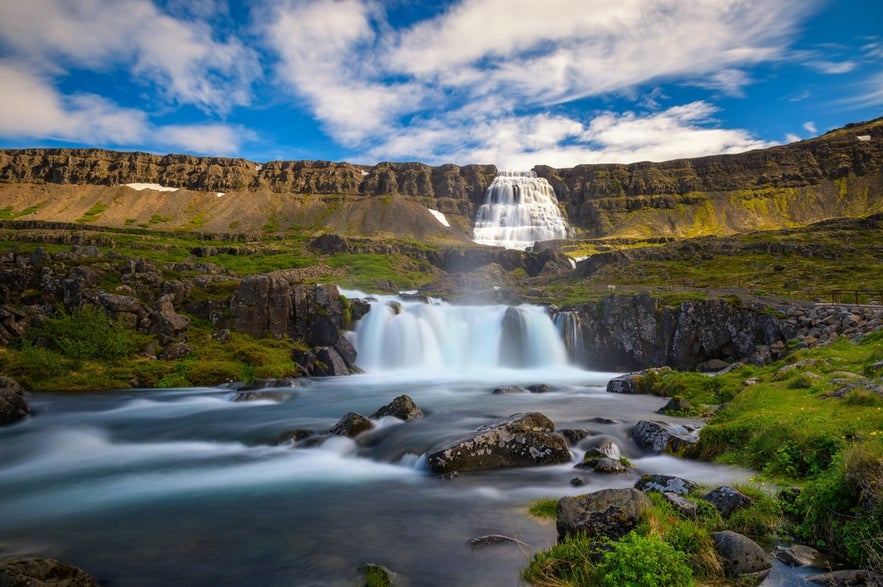 The stunning Dynjandi Waterfall is another regional hotspot. Water from the falls cascades into Arnarfjordur Fjord, the second largest in the Westfjords. The fjord is associated with folklore about sea monsters, and there’s even an Icelandic Sea Monster Museum if you want to learn more.
The stunning Dynjandi Waterfall is another regional hotspot. Water from the falls cascades into Arnarfjordur Fjord, the second largest in the Westfjords. The fjord is associated with folklore about sea monsters, and there’s even an Icelandic Sea Monster Museum if you want to learn more.
The region is also home to the fjords of Hornstrandir Nature Reserve, where mountains and incredible sea cliffs jut toward the ocean. This is the most remote region in the country, as no Icelanders live in the area.
The deepest and longest fjord in the Westfjords (and the rest of the country) is Isafjardardjup Fjord. It’s so big that it has many smaller fjords within it. The largest town in the region is the picturesque Isafjordur, named after its fjord.
The Westfjords are often overlooked, as the Ring Road bypasses the region. Some of the roads are gravel, and many go over high mountains, making them impassable in winter. Warmer summer months are the best time to visit the Westfjords. Booking a summer self-drive tour offers you the freedom to explore at your own pace.
The Eastfjords of Iceland
Mountains in the Eastfjords are younger, harsher, and more rugged than the flat-topped mountains in the Westfjords. The spectacular hiking routes in this region take outdoor adventurers to fjords, waterfalls, and other natural wonders.
Hiking from Borgarfjordur Eystri to Lodmundarfjordur Fjord is a perfect way to experience the landscape. This is part of the Viknaslodir hiking area, one of Iceland's hidden gems. North of Borgarfjordur eystri is Vopnafjordur Fjord, home to one of Iceland's best swimming pools.
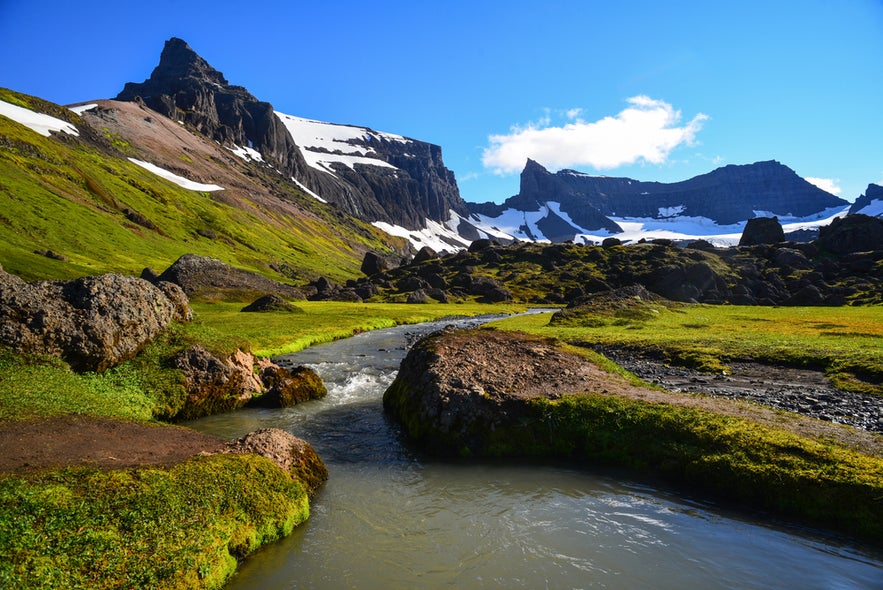 Make sure to stop at the spectacular Storurd Boulders, with its azure waters and otherworldly surroundings. You can also hike to the Hengifoss Waterfall, which sits close to the town of Egilsstadir.
Make sure to stop at the spectacular Storurd Boulders, with its azure waters and otherworldly surroundings. You can also hike to the Hengifoss Waterfall, which sits close to the town of Egilsstadir.
South of Lodmundarfjordur Fjord, you’ll find several stunning fjords, all battling to be more picturesque than the other. This includes Seydisfjordur Fjord, which many people consider Iceland’s most beautiful.
Fjords in North Iceland
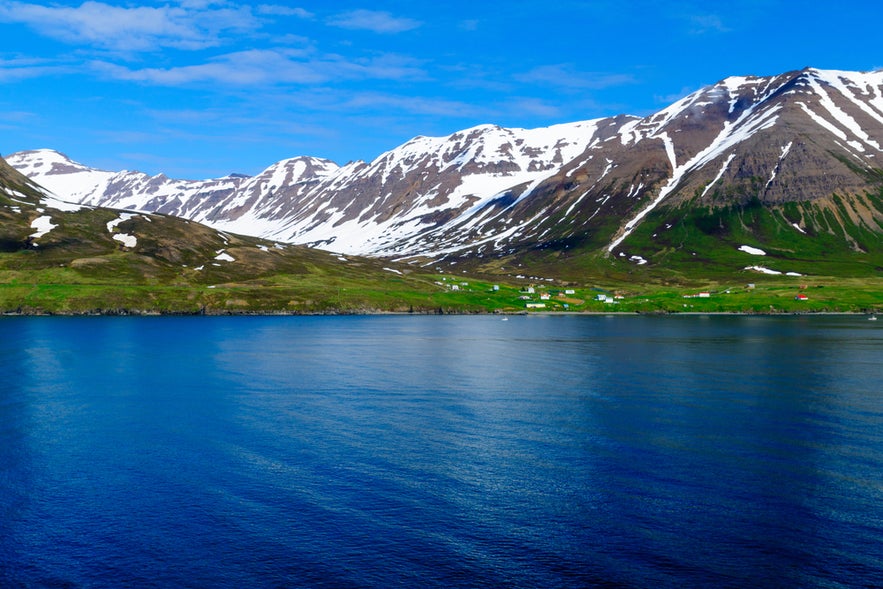 There are two large fjords and several smaller ones in North Iceland. The big ones are Eyjafjordur Fjord and Skagafjordur Fjord.
There are two large fjords and several smaller ones in North Iceland. The big ones are Eyjafjordur Fjord and Skagafjordur Fjord.
Eyjafjordur Fjord is Iceland’s longest fjord. It includes attractions like Akureyri, whale watching, and Forest Lagoon. Visitors also come to see Hrisey, an idyllic island with a rich history and culture.
Skagafjordur Fjord contains three uninhabited islands — Malmey, Drangey, and Lundey. Between the two fjords is the Trollaskagi Peninsula, a mountain pass where you can find the picturesque Siglufjordur Village.
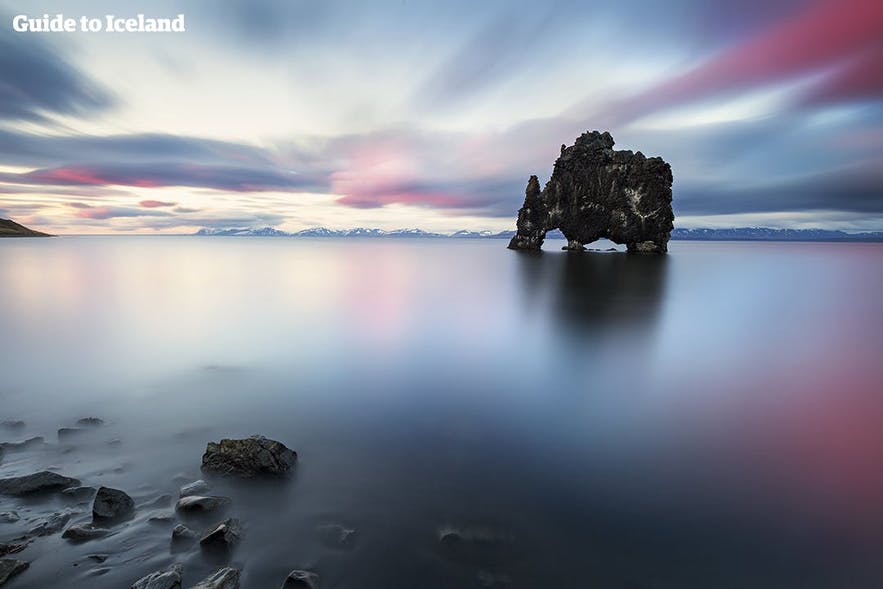
Siglufjordur used to be Iceland's “herring capital” but is now more famous for being the backdrop for the Icelandic crime series "Trapped." If you visit, you'd be well advised to check out the award-winning Herring Era Museum.
Explore the Magnificent Fjords in Iceland
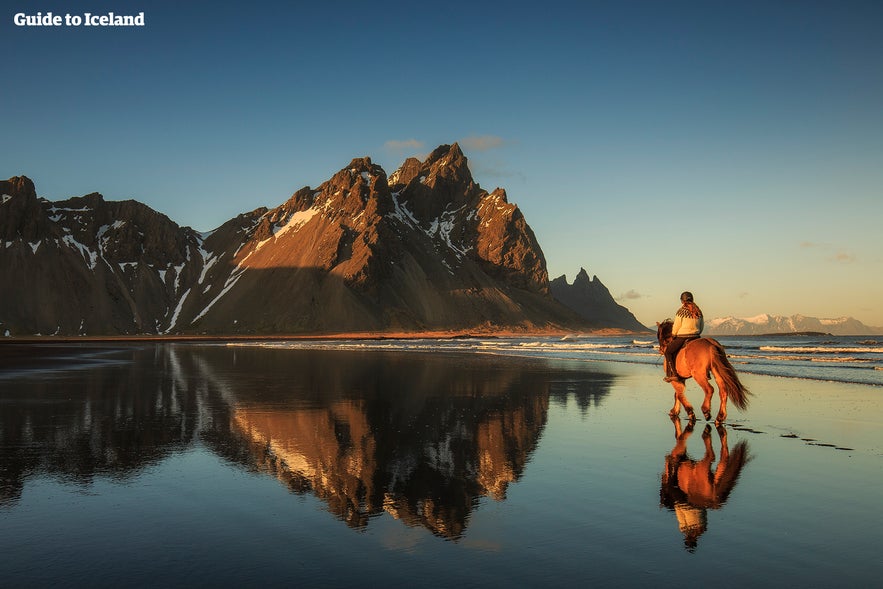
Self-Drive Tours To Consider
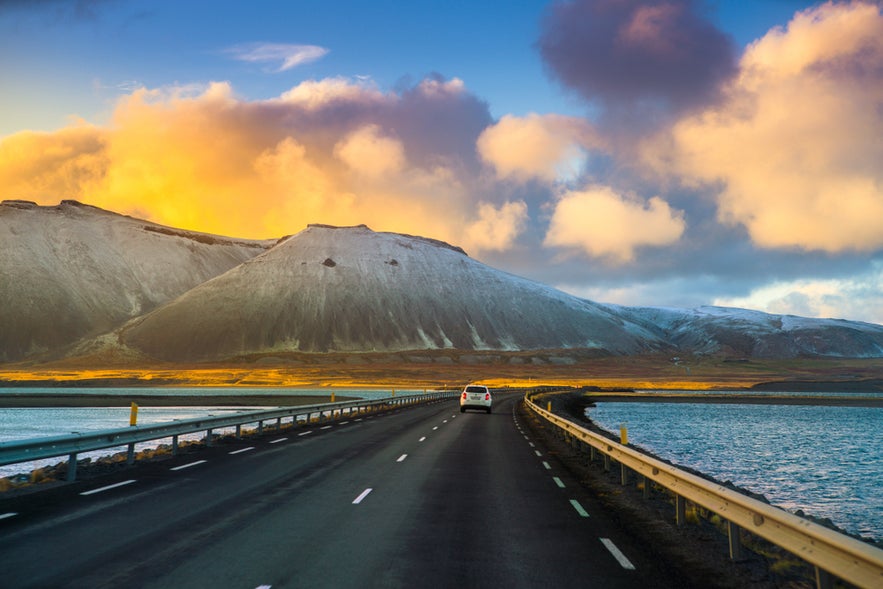 Explore the different fjords of Iceland with the freedom of a rental car. These highly rated self-drive tours offer a complete package of adventure.
Explore the different fjords of Iceland with the freedom of a rental car. These highly rated self-drive tours offer a complete package of adventure.
-
10-Day Circle of Iceland Self-Drive — Explore every corner of Iceland, including glaciers, waterfalls, volcanic landscapes, and black sand beaches.
-
2-Week Complete Iceland Self-Drive Adventure — See Iceland’s natural wonders on this epic two-week journey around the entire country.
-
One-Week Circle of Iceland Self-Drive Tour — Enjoy a fast-paced itinerary covering all major attractions, from glaciers to geysers, in just one week.
-
7-Day Summer Self-Drive Adventure — This one-week tour lets you discover Iceland’s top highlights during the vibrant summer season.
-
One Week South & West Iceland Self-Drive — Explore the best of Iceland’s South Coast and magical West on this slow-paced yet scenic one-week itinerary.
-
9-Day Ring Road & Snaefellsnes Self-Drive Tour — Drive the iconic Ring Road and explore the diverse landscapes of the Snaefellsnes Peninsula in nine unforgettable days.
Take Guided Tours Instead
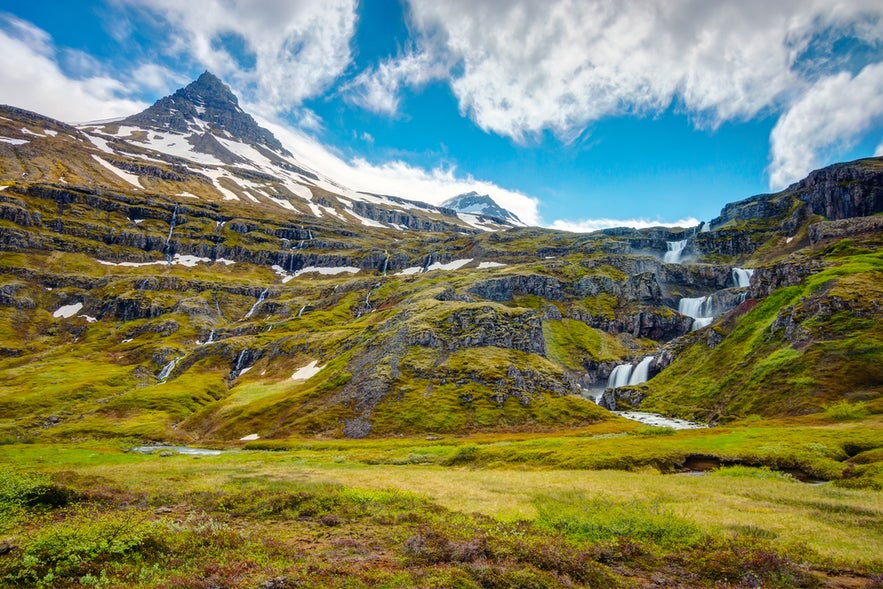 You can also visit the fjords on a guided day or multi-day tour with an English-speaking guide to help you maximize your experience.
You can also visit the fjords on a guided day or multi-day tour with an English-speaking guide to help you maximize your experience.
-
5-Hour Puffin Watching and Folklore Tour in Borgarfjordur eystri — Visit Borgarfjordur eystri and see the iconic puffin birds in their natural habitat.
-
Small-Group Hiking Tour in the Westfjords From Isafjordur — Explore the beauty of Hornstrandir Nature Reserve, one of the most remote areas in Iceland.
-
Small-Group 3-Day Arctic Fox & Midnight Sun Tour in the Westfjords — Embark on a journey to find Iceland’s Arctic foxes under the midnight sun.
FAQs About Iceland’s Fjords
Looking forward to visiting Iceland's fjords on your trip? Here are some frequently asked questions people have.
Are there fjords in South Iceland?
No, South Iceland is mostly flat with black sand beaches.
Are Iceland’s fjords crowded?
No. Most fjords, especially in the Westfjords and Eastfjords, are peaceful and uncrowded compared to tourist-heavy areas like the Golden Circle. They offer a more authentic, off-the-beaten-path Icelandic experience.
Can you see the northern lights in Iceland’s fjords?
Yes. The fjords are great for northern lights because they are far from city lights.
How long does it take to drive through the fjords?
-
At least 2-4 days to properly explore the Westfjords
-
About 1-2 days for the Eastfjords
Are roads to the fjords safe?
Many fjord roads are gravel and winding, especially in the Westfjords. Some roads are only open in summer. Winter driving can be difficult, with snow and ice on mountain passes.
Can you take a ferry between fjords?
Yes. Ferries connect some fjords. For example, the Bjorgvin Ferry travels between Nordfjordur Fjord and the remote Mjoifjordur Fjord.
Can you swim in Iceland’s fjords?
Yes, but the water is very cold year-round. However, some fjords have geothermal hot springs nearby where you can enjoy a warm soak after a cold dip. The Hvammsvik Hot Springs by the shore of Hvalfjordur Fjord offer guests the opportunity to take a dip in the ocean.
Do Icelanders live in the fjords?
Yes, many small fishing villages are located in the fjords, though the population is sparse.
Which fjords are best for seeing Arctic foxes?
The best place is Hornstrandir Nature Reserve in the Westfjords, where Arctic foxes are protected and roam freely.
Are Iceland’s fjords good for camping?
Yes. Many fjords have beautiful campsites with stunning views.
Explore the Fjords in Iceland
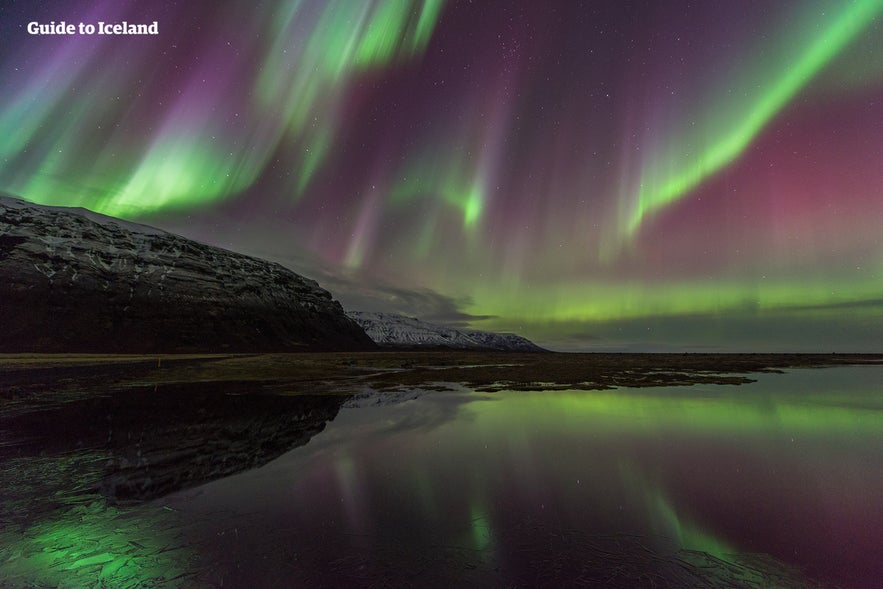 Ready to start planning your trip to Iceland and experience the amazing fjords? Regardless of the region you visit, you can reach Icelandic fjords either by driving or by booking a guided tour. You won’t forget seeing these amazing landscapes up close.
Ready to start planning your trip to Iceland and experience the amazing fjords? Regardless of the region you visit, you can reach Icelandic fjords either by driving or by booking a guided tour. You won’t forget seeing these amazing landscapes up close.
Have you visited the fjords in Iceland? Which region is at the top of your wish list? Tell us about your experience in the comment section below!

